If you want to improve plant growth in the vegetable garden in a cheap and gentle way, you can fertilize tomatoes with baking soda. Since the nutrient requirements of such crops are usually high, this can prove to be a smart and time-saving gardening technique. In addition, using baking soda in the garden can yield a better harvest. This can be of great benefit to many home growers. If you’re one of them, the following gardening tips can help you enjoy sweeter, healthier tomato plants.
Optimize plant care and fertilize tomatoes with baking soda
More and more people tend to try household or gardening hacks to benefit from sustainable solutions. A great alternative to conventional fertilizers is sodium bicarbonate, which can also be used as a versatile home remedy when caring for tomato plants. This way you can achieve healthy growth without much effort or high costs. Since this is also an alkaline substance, it is also suitable for fertilizing fruit and vegetables in domestic gardens. Especially in acidic clay soils, baking soda helps to balance the pH of the garden soil for optimal plant growth.

In addition, as a tomato fertilizer, baking soda can not only be a soil conditioner, but also protect against plant diseases such as powdery mildew, mold or rot. These are common problems that could lead to reduced yields. Also, using baking soda in an intercropping vegetable garden can help vegetables like zucchini and cucumbers to thrive. But how does this stuff affect tomatoes specifically so that the plants can produce juicy and tasty fruit? Here is some information that can be useful when caring for plants.
What effect does baking soda have on plants as a tomato fertilizer?
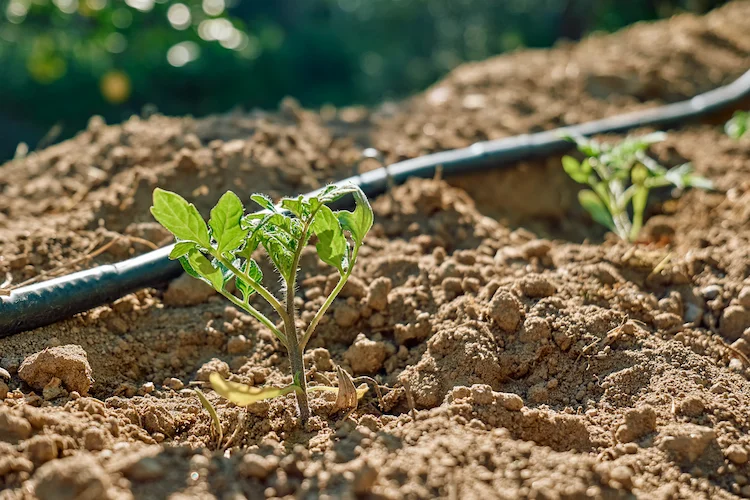
It’s important to note that baking soda alone would not do the trick as a soil additive in poor soil conditions. If your garden soil is generally to be improved, the use of specially developed fertilizers is essential. However, using baking soda as a fungicide can be an effective preventive measure against leaf spot and other fungal infections such as powdery mildew. Baking soda doesn’t actually kill mold, it just changes the pH of plant leaves and stems to stop mold spores from growing. Another benefit is that baking soda absorbs into the soil, which lowers acidity and makes the fruit taste sweeter.
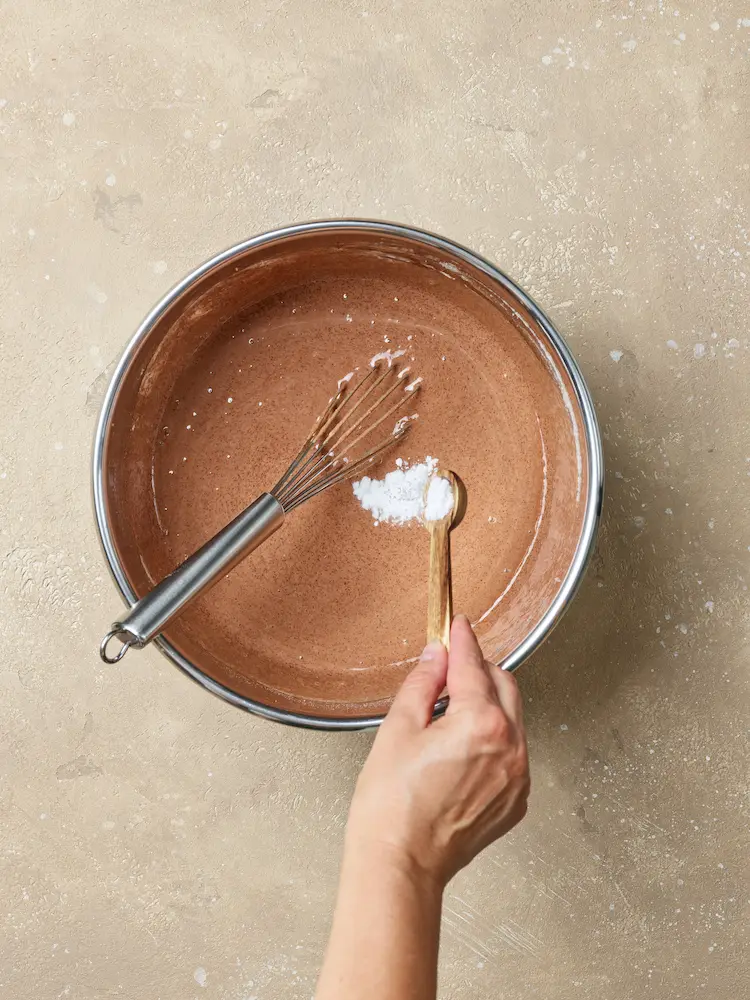
So the action of baking soda as a fungicide is that it disrupts the ionic balance in the fungal spores. Ultimately, this prevents mold growth on tomato plants. Accordingly, you can fertilize your tomatoes with baking soda to protect them from fungal diseases. However, this should be a purely preventive, not a treatment, step in general plant care. In addition, the home remedy is particularly effective as an inhibitor of a possible spread of plant diseases to healthy and uninfected plant tissue.
Can you prevent rot by fertilizing your tomatoes with baking soda?
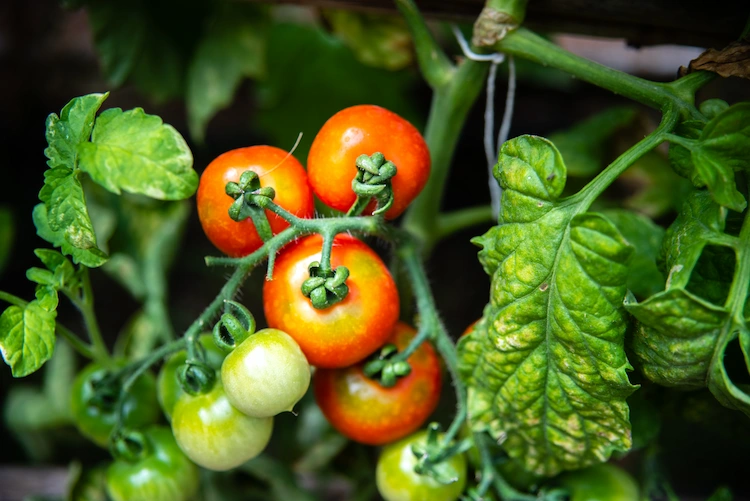
There is another easy way to prevent rot on tomato plants by using aspirin and baking soda in combination. This can also prevent the spread of fungal diseases and enable a richer harvest. To do this, spray your crops once a week with a mixture of 1 liter of water and a few tablespoons of both ingredients in a spray bottle. This will ensure in good time that your garden plants will not be infested, but it is best to do this in dry weather. Otherwise, it might be difficult to control rot in rainy weather or when the tomatoes are already infected.

If the tomato plants are already showing signs of rot, you could try to control the spread. In such cases, baking soda can be used just as effectively as it prevents fungal growth from developing further on the fruit. Such a preventive step is important if you want to save your crops. However, you should treat plants regularly with the solution to achieve the desired effect. Also add some soapy water or dish soap to your tomato fertilizer to help it stick to the plants better. Usually this does not harm the plants, but you should make sure to use a few drops of it.
How and when should you fertilize tomatoes with baking soda?
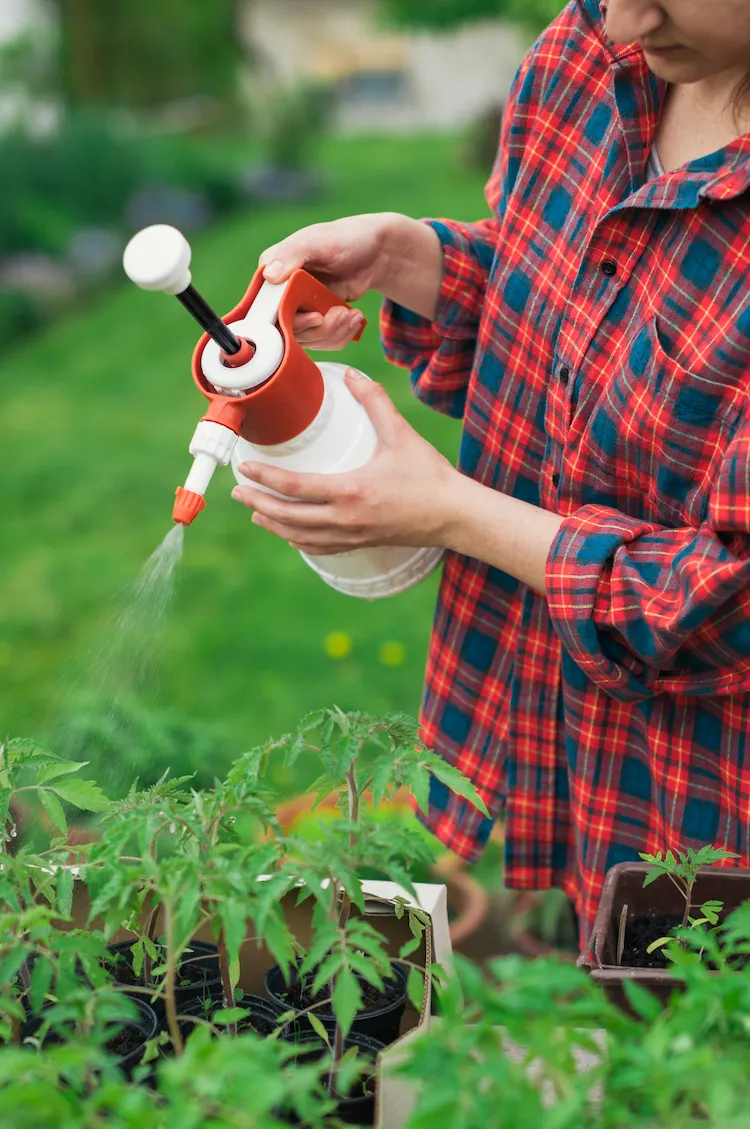
As you’ve already read, using baking soda works best as a preventive life hack for disease prevention and optimized fruit production. In addition, you can try to get tastier tomatoes by fertilizing the seedlings with the home remedy after growing them in the garden soil. However, this should be done at intervals of one week to 10 days so as not to over-fertilize the plants. Otherwise, you can just go step by step with the following ingredients and materials.
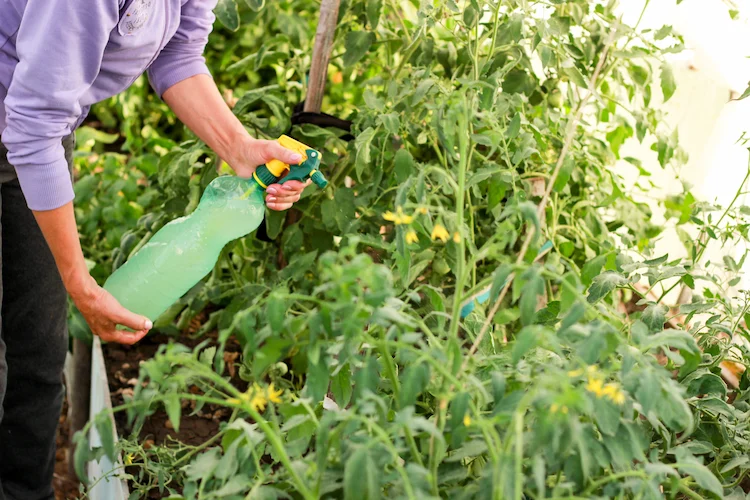
- First, dissolve a tablespoon of baking soda in a liter of water and drop some washing-up liquid into it so that the solution sticks to the plants. It is best to spray the tomatoes with it in the evening after the sun goes down and not before it rains. The application of the homemade fertilizer would actually be recommended after the rain, since pathogens are most active in this phase.
- Try to use up the whole amount by treating neighboring garden plants as well, since such a fertilizer should always be fresh.
- Remove diseased plant leaves before fertilizing to prevent eventual spread. Also water the tomatoes with a garden hose beforehand to loosen any mold spores.
- Only after following the above steps can you spray fruit, buds and plant leaves with the spray bottle. Use it to moisten the leaves from below as well in order to spread the protective layer all over. Of course, you can also use a garden sprayer instead of a spray bottle in many garden beds to make gardening easier.